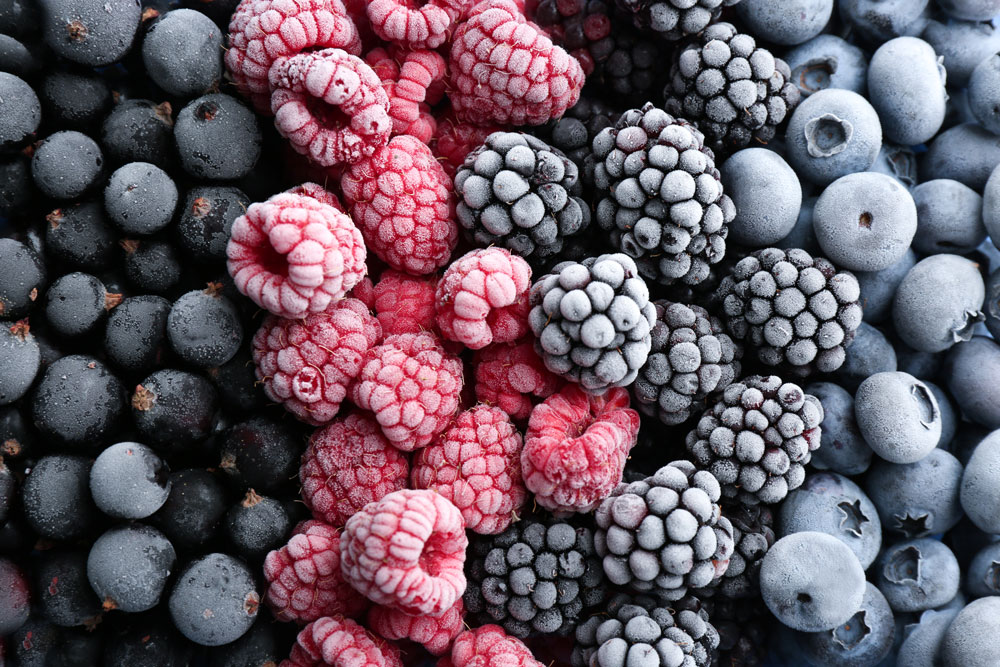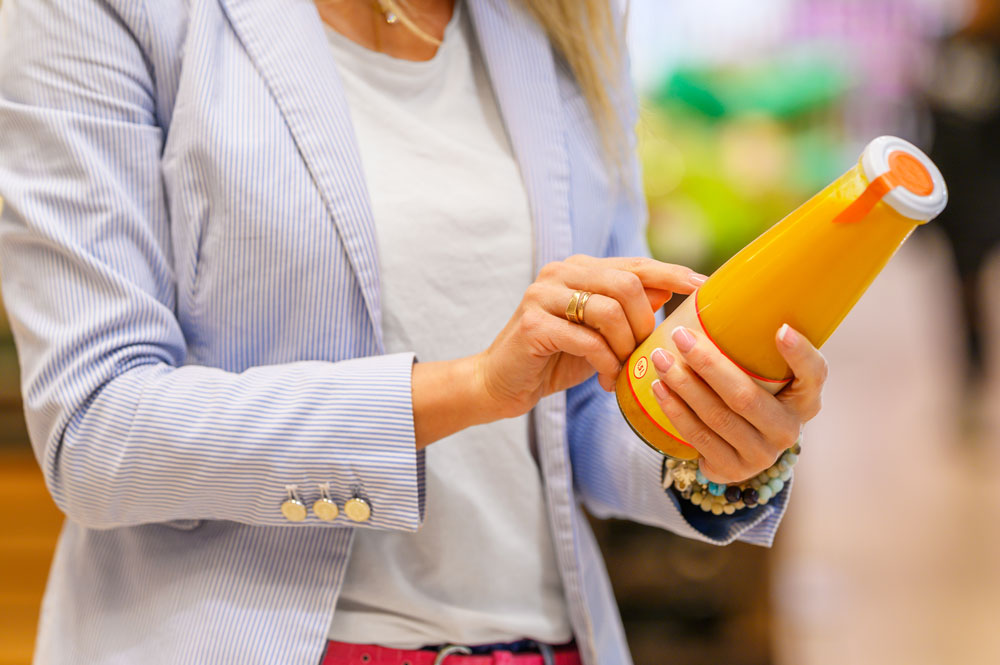Have you been wanting to improve your grocery shopping buying habits?
In this blog, we're going to talk about how to shop your grocery store's perimeter for healthier food choices.
While most people tend to spend the majority of their time really narrowing into those inner aisles, the freshest and, often, the healthiest foods are actually located in that outer perimeter. Yet, figuring out how to zero in on where those healthier food choices really are in that perimeter can sometimes be confusing and more than overwhelming.
In this discussion, I'm going to introduce 10 tips to make shopping the perimeter of your grocery store more affordable, easier and quicker. If you'd prefer to watch instead of read, check out this video. Let's dive in!
Tip #1: The Produce Section is a Great Place to Start Your Shopping
Don't worry, I won't be bombarding you with statistics but here's a big one that's worth sharing: only 9% of adults eat the recommended amount of vegetables, while they only eat 12% of the recommended fruit. For children, the statistics are pretty dismal as well. So, with that in mind, shopping the produce section is a great place to begin shopping.
And here's a bonus for you: if you load up your cart right off the bat in that produce section, you're going to be less tempted to cave into that temptation for all those packaged snacks as you get farther into your shopping.
Tip #2: Shop and Eat That Rainbow
In other words, shop and eat a full variety of colorful fruits and vegetables - yellows, reds, purples, oranges, even whites. Without a doubt, eating a rainbow of produce pumps up the visual appeal of your meals, as well as the flavors, but most importantly, all these colors reflect a deeper, richer, more comprehensive mix of the vitamins, minerals and other nutrients our bodies need to thrive.
Tip #3: Conventional or Organic; It Doesn't Have to Be an "All or Nothing" Proposition
While there's certainly growing evidence of health and environmental benefits with organic produce versus conventional produce, it's no secret that organic is more expensive. The Environmental Working Group's Clean Fifteen and Dirty Dozen Lists are a great resource for you to take on your shopping trips. It can really help inform your decisions on whether you might want to lean into certain organic produce and when sticking with conventional is okay.
The EWG is a non-partisan, non-profit organization dedicated to protecting human health and the environment. Their guide ranks pesticide contamination across 47 different popular fruits and vegetables. The top 15 foods with the least amount of pesticide contamination are called the Clean Fifteen. Meanwhile, those foods with more pesticide contamination are referred to as the Dirty Dozen. Just go to ewg.org to get your free copy of your guide.
Tip #4: Check Those "Use By" Dates
It definitely can be frustrating to feel you've left money on the table by purchasing produce that went bad two days after you brought it home from the store. "Use by" dates for produce in the same case can vary pretty significantly. For example, mixed greens that I just bought varied by four days across three different "use by" dates in the same case. And, depending on the size of the grocer and the frequency of the restocking, those days can vary up to a week.
The freshest produce is usually stocked toward the back of the case because those grocers want to move that older produce first. So don't be shy; reach to the back of that produce case, pull out that product and check the "sell by" day. You're good to go!
Tip #5: Frozen Fruit is a Convenient and Often More Affordable Option to Fill That Produce Gap

Fruits are quickly frozen after being picked so you can use them over several months and they still retain all their nutritional quality. Frozen options can also be more affordable, especially when you're buying out of season or you're making those decisions on organic versus conventional produce.
As an example, all of this produce is out of season during winter here in the Upper Midwest, so I opted for frozen options. Because strawberries are a perennial top-of-the-list Dirty Dozen culprit, I decided to go with organic on that choice. One caveat with frozen, if it's got added sugars, salts or sauces, skip it.
Tip #6: The More Store Employee Hands Touch Your Produce, the Higher It's Going to Cost
Believe me, I get it. Pre-cut fruits and vegetables are a convenient, easy grab, especially when we're pressed for time. We've all been there, but taking a few minutes, as much as possible, to wash and cut our own produce can yield significant savings over time. Plus, when we do, we're putting extra love and preparation into the foods we eat and what we feed others.
Tip #7: Looking for the Healthiest Choices? Put Fatty Fish at the Top of That List
Fatty fish like salmon, cod and rainbow trout are easy to prepare and cook quickly, so they're perfect for households on the go. An excellent protein source, fatty fish also provides vitamin D, B12, iron, iodine, selenium and Omega-3 fatty acids. A nutrient most of us don't get enough of in our Western diets, Omega-3s not only provide energy but also are essential for helping us build and maintain healthy bodies.
Frozen fish and seafood are a great option. They're flash frozen at peak freshness and they're often easier on your budget. Beyond fish and seafood, choose chicken, turkey and even bison. Bison live a life of grazing, so they offer a leaner meat, lower calories and they're packed with Omega-3s. Then it's on to lean cut pork and beef, and if your budget can stretch far enough for grass-fed or grass finish, go for it! It's a leaner meat and also has high Omega-3s.
Tip #8: When Shopping Dairy, Read That Label: Non-Fat, No Added Sugar
Which yogurt to choose? Well, regular will be higher in calcium but lower in protein, while Greek yogurt will be the opposite. Either way, consider going with plain yogurt, no sugar added, and then, when you get it home, add your own fruit and maybe some nuts. When it comes to those plant-based dairy alternatives, many of them are loaded with added sugar and some even with too much salt. So again, read those labels and, if you can, try to go with those unsweetened versions and check the sodium.

Tip #9: Blow Right by All Those Sweets and Head Right to Those Minimal Ingredient 100% Whole Grain Breads
When it comes to bread packaging, we've all seen the buzzwords - healthy, wheat, natural, multi-grain… all of those words that basically mean nothing. So look on that packaging for 100% whole wheat or 100% whole grain. Another way to check is the Whole Grain Stamp. Created by the Whole Grains Council, the Whole Grain Stamp has become very prevalent in recent years among bread producers. It will tell you if a bread is 100% whole grain, if it's more refined grains or if it's something in between.
Here's an example for you: I have a bag of bread right here that says whole wheat, right? Well, when we look closer, to that tiny little Whole Grain Stamp, we find out there's a reason why it doesn't say 100% whole wheat; it's 50% or more whole grains with the rest being refined grains. So if the package doesn't say 100% whole wheat, doesn't say 100% whole grain, doesn't have the Whole Grain Stamp, then blow by all that other messaging on the packaging and go straight toward the ingredients, because food producers have to list ingredients in descending order based on weight. The most prevalent ingredient is always listed first. If you're checking for 100% whole wheat bread, you're going to see either 100% whole wheat flour or wholemeal flour at the top of that label and you shouldn't see any other flours listed as an ingredient on that label. While in the ingredients list, check for added sugars and excess salt and, if you see a bunch of words you can't pronounce, you probably don't want to buy that bread let alone eat it.
Tip #10: Not Everything Offered in the Outer Perimeter is Healthy
For example, items in the perimeter are not always free of chemicals, including added colors, artificial flavors and preservatives. Just because something is labeled "natural" doesn't mean it's good for us. Many of those products include added sugars and sodium and, in the case of some meats, even antibiotics and hormones.
Finally, besides costing a premium, the items in the cheese and deli section can add a lot of calories, fat, sugar and sodium to our diet. If you love cheese, by all means, go for it. Just do it in small portions!
Learn More About Nutrition at the Y
At the YMCA of the North, we're dedicated to helping the people in our community practice good health and nutrition. If you live in the Twin Cities metro and you're looking to develop a healthier lifestyle, contact the Y to become a member today!